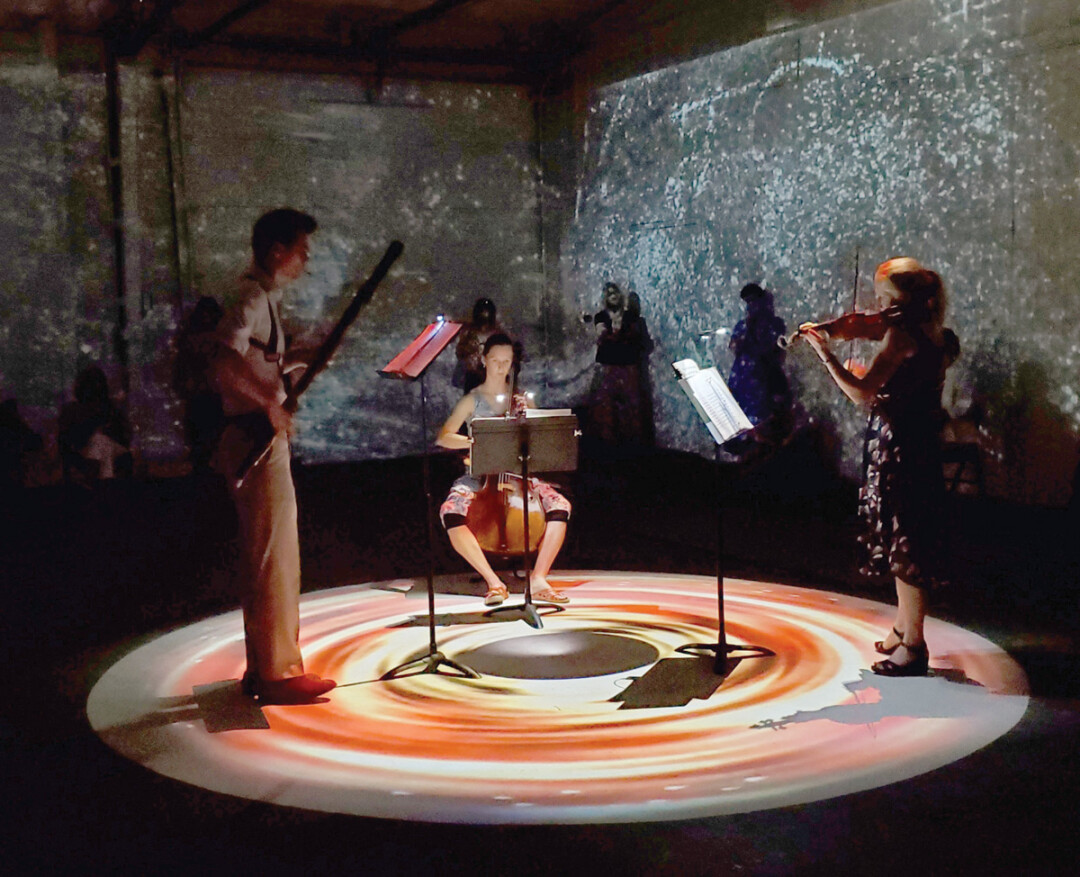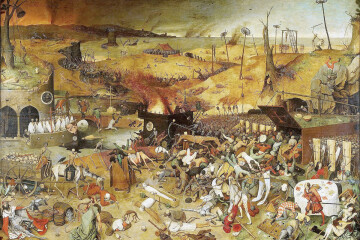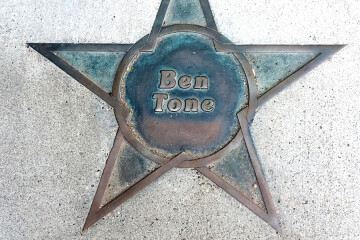Baroque Music Montana
Alessandro Stradella was one of the 17th century’s finest Baroque composers—and one of its most threatened composers due to his passion for wine, women, and song. Stradella lived in Venice, played the lute, composed music, and performed his oratorios, serenatas, and operas while becoming well-connected with the rich and powerful. But he became too well connected, especially with a young woman named Agnese, the fiancée of Alvise Contarini from one of the most powerful families in Venice. Stradella and Agnese soon had to make a hasty departure to Turin, where Agnese took refuge in a convent. A jealous and angry Contarini followed the couple to Turin and insisted that Agnese either marry Stradella or become a nun, to save his honor. Stradella was not allowed to communicate with Agnese in the convent, but he did find an unusual way of communicating with her anyway: sending cantatas he composed with messages in them specifically for her. Eventually Contarini’s hired assassins caught up with Stradella in 1682, putting an end to this brilliant Baroque composer’s life.
In 2019, Carrie Krause and her newly formed Baroque Music Montana (BaMM) created and performed a concert, aptly named “The Stradella Incident,” about Stradella’s life and the mystery and intrigue surrounding Stradella’s murder, using the little-known Stradella’s own music. BaMM, Krause’s non-profit organization, was the perfect vehicle to perform, interpret, and explain Baroque music to Montana stages. “All the World’s a Stage,” says Shakespeare in his play As You Like It, and Krause embraces that saying by bringing Baroque music to audiences across Montana on all kinds of stages, including barns, open fields, porches, warehouses, and concert halls. These sites all echo with tunes familiar to 17th-century ears, accompanied by Krause’s historic explanations.
BaMM specializes in Baroque chamber music inspired by history, presenting interactive house and public concerts, youth programming, lectures on historical performance, and annual workshops open to anyone. Most of us are aware of several Baroque music pieces: Pachelbel’s “Canon in D” and Vivaldi’s “Four Seasons” are just two examples that we often hear on a regular basis in our daily lives. Similarly, we all know some of the major Baroque composers: In addition to Pachelbel and Vivaldi, there is J.S. Bach, Henry Purcell, and George Handel. Lesser known but important composers of that era also include Georg Telemann, Dietrick Buxtehude, and Allesandro Stradella, just to name a few. And surprisingly for this time period, there were several women composers: Barbara Strozzi (Venice), Francesca Caccini (Italy), Isabella Leonarda (Italy), and Elisabeth Jacquet de La Guerre (France). Krause spends a lot of her research time hunting for little-known Baroque era manuscripts, noting that some manuscripts are readily available in digital archives, while others require a great deal of archival work to unearth and prepare for performances.
BaMM’s musician roster rotates based on desired instrumentation for repertoire performed in intimate spaces similar to where the music was originally intended. They often perform using period instruments that were either built in that time period or built today using original specifications and methods to create authentic period sounds. Some of the commonly used historical instruments were harpsichord, lute, violin, bassoon, theorbo, viol de gamba, and cello. BaMM concerts often reference original manuscripts, iconography, and historical documents to help audiences understand the times which inspired this music, while inspiring fresh interpretations.
One of the defining characteristics of Baroque music is the use of counterpoint, a compositional technique that combines multiple contrasting themes in a way that sound unified. This often involves trills, grace notes, turns, and rapid scale passages. Baroque music is a conversation between individual instruments, like individual voices carrying on a conversation. Baroque music was popular in Europe beginning around 1600, immediately following the Renaissance period, until roughly 1750, when the Classical period in music began. The music of each era was unique, often with instruments unique to that period.
Emerging nations at this time led to an increasingly noticeable difference in music methods. Indeed, one can often hear a difference in the music composed at this time from Germany, Italy, or France. This emergent nationalism came right on the heels of the Renaissance era and the opening of the minds of the people through the discoveries of Copernicus and Galileo; the thoughts of great philosophers like Descartes, Hobbes, and Locke, the art of Rubens, Rembrandt, and the writings of authors such as Shakespeare expanded people’s minds, and opened new worlds of thought for people. The Baroque period of music became known for its innovative ways of understanding music through notation and rhetoric. Part of this was the notion that music is a type of communication, and Baroque musicians wrote music that clearly evoked conversations, and attendant emotions.
Baroque Music Montana Board member Judy Tsiang tells why Baroque music is so appealing to her: “If you listen to Baroque music on radio, or a recording, it can go right past you. But in live performances, each instrument is its own voice, and you can hear each voice easily, separating it from the other voices. Baroque concerts become a conversation between instruments; you can hear them talking to each other. It’s fascinating.”
On June 30 of this year, after a series of cold, rainy, windy days, I sat on a stone on a mountain hillside, listening to Krause performing an outdoor concert, when the sun broke out between the gray clouds. Just a few feet away from me, several Evening Grosbeaks were busy pecking at a bird feeder, almost in time with the cello and violin. Krause finished one sonata, put her violin in rest position, and told the story of the next composer, the city he lived in, the war that was quickly brewing, and the stress and background for the piece we were about to hear. As the first notes of her violin were joined by the deeper melodic contrasting reply of the cello played by Julia Slovarp, the Grosbeaks paused their feeding and flitting, as if they, too, were listening in on this conversation. And it all seemed to fit together so nicely: a sunny break in the weather, a small ensemble playing music in a natural setting surrounded by nature. For a moment I felt at peace with the world, connected through music and history to a bygone era, the coronavirus far away. And all would be well with the world. This music was playing.
The upcoming season for BaMM includes their first recording project. Carrie Krause has long dreamed of having a professional recording session with nationally known Baroque musicians performing on period instruments. In October, sonatas written in Germany in the 17th century, composed to soothe the soul with hauntingly beautiful and intimate melodies, will be recorded and available for purchase online.
As of this writing, Baroque Music Montana’s schedule for 2020-2021 is as follows:
• Recording Project performance tour; Havre at MSU Northern on Nov 14, Rudyard on Nov 15, Lewistown on Nov 17, and Holy Rosary in Bozeman on Nov 18, 2020.
• Sara Levy’s Salon: Quartets from the Bach Family to Mendelssohn in January or March, 2021.
• Youthful Splendor, featuring outstanding high school students in well-crafted baroque concerti, accompanied by an orchestra of Bozeman’s top professionals in Inspiration Hall, MSU, on February 7, 2021.
Here are some suggested pieces from several Baroque composers, giving a brief sampling of music representative of the Baroque era; you may have heard some of these songs in movies. You can find these pieces on YouTube or your favorite music search engine:
Elisabeth Jacquet de La Guerre: “Sonata in D major for Violin and Continuo”
Henry Purcell: “Fantasias for Viols”
Georg Telemann: “Trumpet Concerto No.1 in D major”
Dieterich Buxtehude: “Passacaglia in D minor”
Antonio Vivaldi: “Concerto for Two Violins in A Minor”
Francesco Geminiani :“Concerto Grosso ‘La Follia’”
Isabella Leonarda: “Sonata Duodecima”
In addition, Carrie Krause has a number of excellent music samples from her concerts that can easily be streamed at https://baroquemusicmontana.org/media/.
For more information, including updates and additional programming to performance scheduling, and how to purchase BaMM recordings, please visit the Baroque Music Montana website at https://baroquemusicmontana.org



